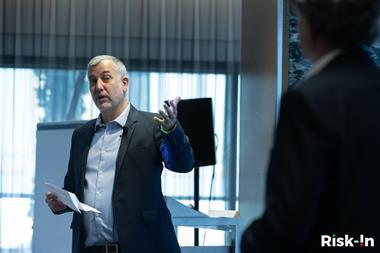Why risk managers should view risks from different perspectives and challenge subconscious bias in their roles
“It is estimated that 90% of our thought processes happen automatically, as subconscious reactions,” said Karla Gahan, business continuity officer at the University of Newcastle, Australia, speaking as part of StrategicRisk’s #ChangingRisk campaign. “It is automatic. It is fast, it is reflexive, it is emotive. We tap into these shortcuts to make quick judgements.”
Gahan, who has researched bias and risk, says bias is a natural part of human thinking, developed over thousands of years. While it has taught humans to survive, it can lead to narrow-thinking.
“It is part of our evolutionary development and helped us to survive, It has taught us that by sticking with our tribe, we are safer than being out in the wilderness,” Gahan adds. “That being with people who look just like us, we are safe. But this type of thinking is at the very heart of bias.”
Gahan believes risk managers are guilty of different types of bias, including confirmation bias, listening to information that confirms what we already know. Groupthink, a lack of critical thinking in group decision-making, is another common bias, Gahan says.
People are also guilty of sunflower bias, following a leader’s ideas, opinions, and suggestions. Overconfidence in one’s capabilities is another common mistake made by people, she adds.
Gahan believes risk managers “are in a unique and privileged position in terms of being able to recognise and counter bias”. She believes risk managers can spot risks and dangerous decision-making patterns.
“When assessing and discussing risks, we are given direct access to what happens in all areas of an organisation, and we have got the opportunity to observe those behaviours first hand. We can help implement measures to help change behaviours and improve culture.
“We need to be alert to different types of bias, and challenge them in constructive ways, both when we recognise them in others, and while we are mindful of our own behaviour,” she adds.
“In terms of risk assessments, or attending risk committee meetings, there’s a potential a bias is influencing the outcomes of those meetings, meaning you’re liable to arrive at conclusions without considering alternatives.
“For example, there’s a chance the risk you’re capturing is the risk people want you to hear, rather than an accurate picture of what could be impacting your organisation, that’s confirmation bias.
“There’s a likelihood people do not want to make changes to risk controls because it will take cognitive effort to consider alternatives, that’s status quo bias. And there’s a possibility people will talk about risks at the forefront of their mind, and that’s availability bias.”
Risk managers can take steps to minimise bias in their organisation, Gahan said. Pre-meeting and workshop surveys, scenario-planning and pre-mortem technique, an inclusive culture, a culture of curiosity, and considering multiple opinions can all help to counter bias.



















No comments yet